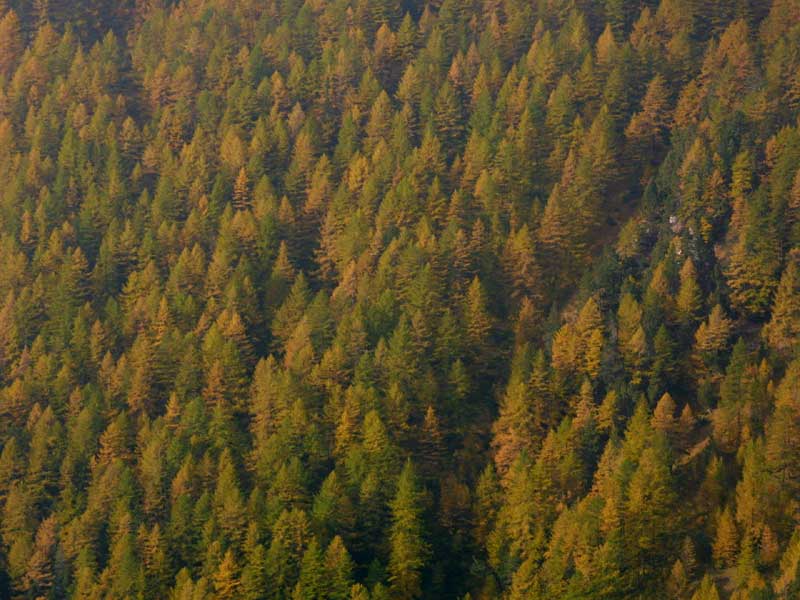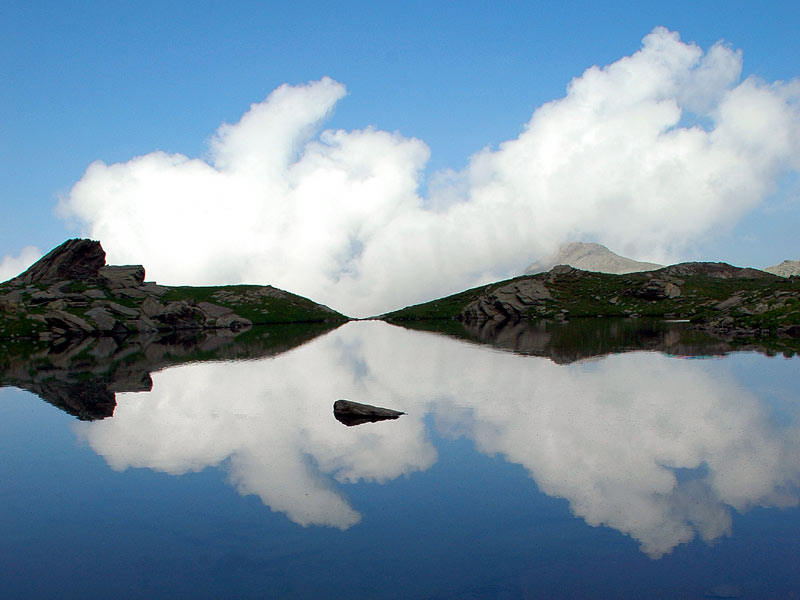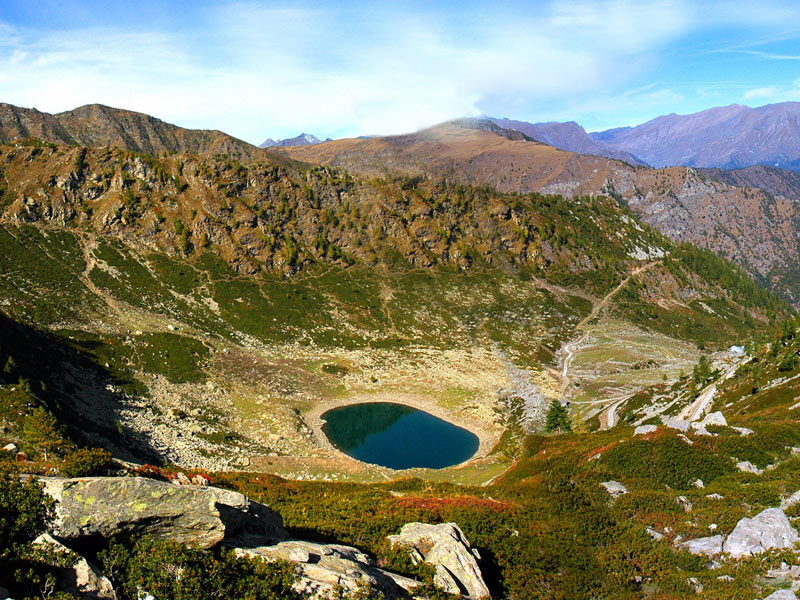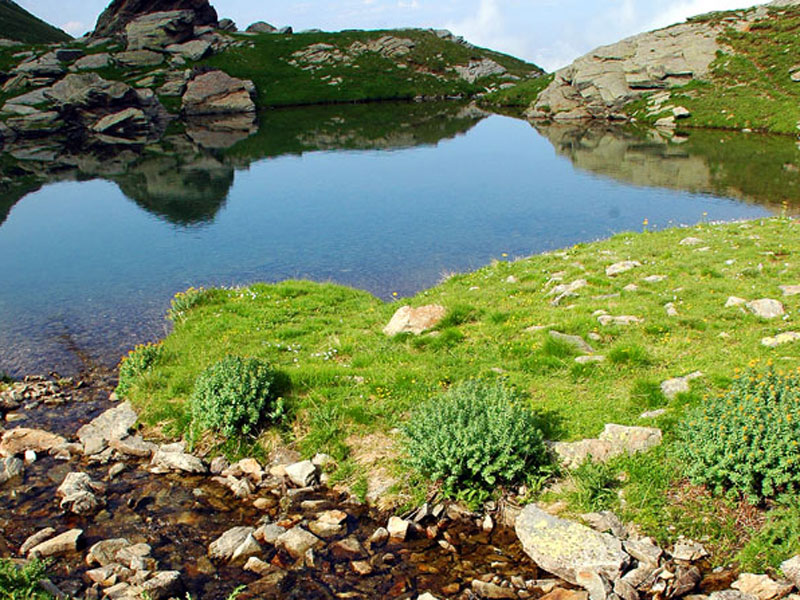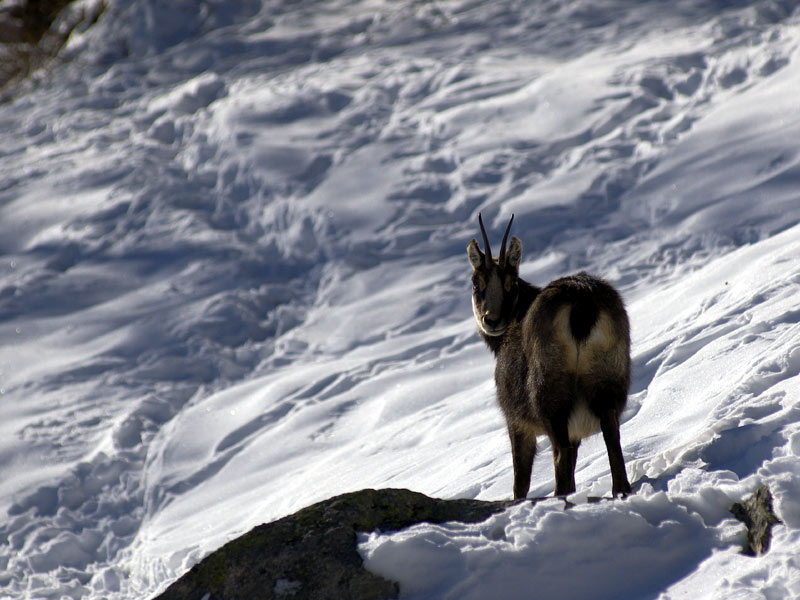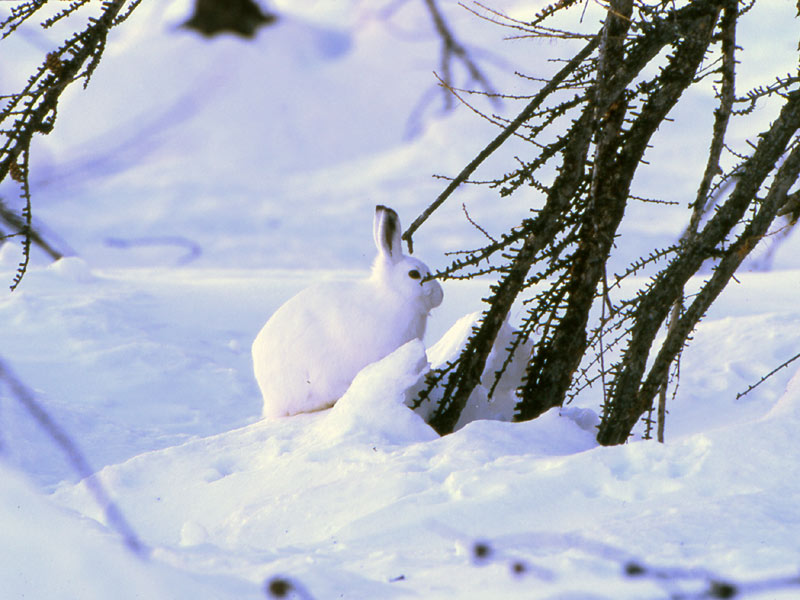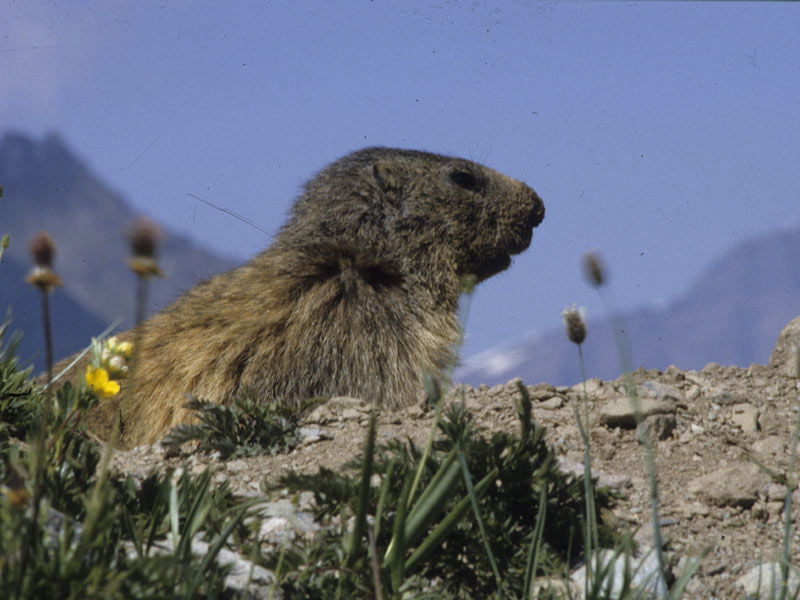Protected Area
Identity Card
- Land Surface Area: 973.00 ha
- Lower altitude (m): 1'796
- Higher altitude (m): 2'855
- Regions: Piemonte
- Provinces: Torino
- Municipalities: Perrero
- Establishment Measures: LR 19 29/06/2009
- PA Official List: EUAP0884
- Park Authority: Città Metropolitana di Torino
Nature Park of Provincial Interest Conca Cialancia
The area lies entirely in the Municipality of Perrero, between 1,796
and 2,856 meters above sea level; you can reach it by taking a military
carriage road leaving from SP road Val Germanasca and heading to Lago
Lauson and then to Conca Cialancia: given the roadbed conditions, it is
recommended to use an all-terrain vehicle.
The name of the Park
comes from the local dialect "cialancio", meaning landslide. If you
visit the place, you will understand the reason for this name: the
whole valley is furrowed by several gullies leaving material in any
season, continuously changing the shape of the territory. The area
houses some summer grazing lands which are still used in the summer as
pastures. The typically alpine vegetation includes green alders,
mountain ashes, and several herbaceous species like the Twoflower
Violet, the White Hellebore, the Common Wood Sorrel, and the Common
Lady's-mantle. At higher altitudes there is the acidophilus sub-alpine
willow grove together with wonderful pioneer species like saxifrages,
the Bavarian Gentian, the Alpine Rock-Jasmine, and the Glacier
Crowfoot. As far as fauna is concerned, the area is populated by the
typical ungulates of the Alps (chamois, wild goat, deer, and roe deer),
the mountain hare, the fox, the ermine, the partridge, the black grouse
the rock partridge, the snowfinch and many others. Among the
amphibians, there is the large alpine salamander, an endemic species of
Alpi Cozie, which adapted to the high-mountain environment delivering,
unlike the other amphibians, entirely developed babies.
Geology
Conca Cialancia, like the whole Val Germanasca, is situated in a central position in the western alpine chain and is part of Dominio Pennidico, which is divided in the following units:
- crystal massifs within Dora-Maira, Gran Paradiso and Mt. Rosa, formed by continental basement rocks
- Piemontese, Brianzonese, and Subbrianzonese Areas, representing the covering units.
Val
Germanasca includes sections of the Dora-Maira Massif and the
Piemontese Area (or Calcareous Schist Complex with green stones).
The
massif Dora-Maira extends from Val Susa in the north to Val Maira in
the south, has an elliptic shape bordered in the east by the Quaternary
deposits of pinerolese and cuneese plain and in the west and in the
north by the Calcareous Schist Complex with green stones. It is divided
into two structural units: the lower one is formed by metasediments of
permo-carboniferous origin which probably covered an ancient rise,
whose evidences can be found in the rests of the upper unit, formed by
polymetamorphic schists with marbles and metabasites. Moreover, in both
units there are gneiss rocks and metagranitoid rocks with chemism
varying from granitic to tonalitic and dioritic. There are also
discontinuous and reduced stretches of a Mesozoic covering.
Piemontese
Area is a very complex geological unit involving the whole western
alpine chain. Also called Calcareous Schist Complex with green stones,
it is formed by metasediments deriving from impure carbonate rocks,
arenites, pelites, and radiolarites of Mesozoic age with metabasite and
metaultrabasites associations of oceanic crust or under oceanic mantle.
As far as superficial (quaternary) formations are concerned, they are
dominated by pluvial-colluvial deposits; however, they are also
characterized by interesting examples of glacial deposits which have
sometimes preserved associated morphologies, like morainic cords or
snow moraines in the high-mountain deposits.
Fauna
The fauna we can sight in Conca Cialancia protected area is typical of the alpine environment. Among the most significant animals, we can observe:
- Golden Eagle (Aquila chrysaetos): it belongs to the family Accipitridae; the plumage color is black-brown, with a golden buff crown and nape, which give the bird its name. It usually lives in open areas, also characterized by rough and harsh mountain conditions. It is a resident bird building its nests on rocks and trees. It lays eggs between February and April, with two-egg clutches. The incubation period lasts about 43-45 days and is usually carried out by the female. The chicks begin to fly after 65-70 days and become independent after 160-170 days. Females are sexually mature at about 3 - 6 years of age. Eagles have two hunting ways: looming and flying. Usually they hunt in pairs: one partner drives the prey to its waiting partner which tries to seize it from above. Their preys mainly include mammals and birds.
- Chamois (Rupicapra rupicapra): it is an artiodactyl mammal belonging to the family Bovidae. It has a hard and rough fur, with a rich brown color in summer, turning soft and almost black in winter. It has 20 cm long horns, with ebony color and urchin-shaped. It has a white snout with two horizontal stripes surrounding the eyes. It prefers mountain slopes, and mainly feeds on grass in summer, lichens and moss in winter, as well as tree buds. It lives in herds formed by female chamois and their kids, while grown-up males tend to live solitary for most of the year. During rut season males seek out female herds and engage in fierce fights with each other. At the end of the winter, grown-up males abandon the herd and return to their solitary life.
- Mountain Hare (Lepus timidus): it belongs to the order Lagomorpha; it changes its fur color according to the season: from the winter white, it becomes red-brown in summer. It has an extremely thick fur and its legs are covered by a thick and long fur enabling the animal not to disperse the warmth at contact with the frozen soil, and to comfortable walk on the snow as if it used natural snow rackets. Females, after a pregnancy lasting about 50 days, deliver 1 to 6 babies, usually 4, and twice a year. They are mainly vegetarian: in winter, the nutritional substances preserved by plants do not wither, but they are kept frozen during the whole season, giving hares the opportunity to survive. They can also survive by eating birch tree and dwarf willow bark, as well as conifer needles.
- Marmot (Marmota marmota): it lives above 1,500 meters of altitude, at the upper edge of the forest, where trees grow thinner. It has a stumpy body, strong legs and long claws, a wide and short stout. The position of the eyes gives it a wide visual field, while its ears are almost entirely concealed by the fur. Its several vibrissae are essential for its underground life. Its predators are the golden eagle and the fox. Marmots dig long and branching galleries, where they can hibernate also during six months. They mate in April and May, and the pregnancy lasts 5 weeks. The litter is usually formed by 2-7 babies and feeding lasts one month. It feeds on grass, grains, and leaves. At the end of September, it takes shelter in its den and prepares for the long winter period. The heartbeat becomes slower and the sleep is broken about a dozen of times by short awakening stages.
- Ptarmigan (Lagopus mutus): it is a small bird belonging to the order of Galliformes. It has a short but strong beak which is brown in summer and black in winter, with base covered with feathers, short and rounded wings, rounded tail, and feathered tarsus and digits. The ptarmigan is seasonally camouflaged; its feathers moult from white in winter to brown in spring or summer. Breeding males have greyish upper parts with white wings and underparts. In winter, plumage becomes completely white except for the black tail. The female plumage is similar to the male's, but in winter the tail is reddish, while in summer it becomes more red with black stripes, and in autumn is brown. The male's "song" is a loud croaking. They are mainly vegetarian birds, but the chicks also eat insects.
- Large Alpine Salamander (Salamandra lanzai): it is an endemic species of Alpi Cozie, in particular of Monviso, Val Germanasca, Valle Po, Val Pellice, and Valle del Guil, at an altitude between the 1,200 and 2,600 meters, in mixed woods of broadleaf trees or conifers and grasslands. In the past, it was mixed up with Salamandra atra, widespread in the Eastern Alps, but with different morphological and genetic features. Its size goes from 12 to 20 cm. The reproduction of this species is not linked to water, since the female delivers already independent babies. The new-born babies go from 1 to 6 and pregnancy probably lasts two or three years. It can live also 10 years.
Flora and Vegetation
As far as vegetation is concerned, the area of Conca Cialancia is characterized by features which are typical of the alpine environment situated above the limit of the arboreal populations and belongs to the climax of the prostrate shrubs and mountain steppes. It has various kinds of vegetal covering: shrubby, herbaceous, and more rarely arboreal covering.
Sub-level ares with a high humidity degree are characterized by shrubby populations dominated by green alder (Alnus viridis); they are thick coenoses linked to the soil humidity and the long permanence of snow, as well as to the mechanical effects of snowslides. In the areas where the alder has recolonized ancient pasturelands, it is associated to other pioneer broadleaf trees like the European mountain ash (Sorbus aucuparia), preparing the soil to the future entrance of the conifers. In general, we can state that pure alder populations defend the highest slopes from erosion and play an important role in the protection of wildlife (black grouse, ungulates) where they alternate with meadow-pasture areas dominated by herbaceous species like the Twoflower Violet, the White Hellebore, and the Common Lady's-mantle.
The highest areas of the Park, characterized by rocky features and humidity, as well as abundant and prolonged snowfall, are covered with acidophilous sub-alpine willow groves dominated by Salix elvetica and Salix glaucoserica, growing together with pioneer species like saxifrages, the Bavarian Gentian, the Alpine Rock-Jasmine, and the Glacier Crowfoot.
The lower altitudes are characterized by ilex tree woods (Larix decidua) on rhododendrons-bilberries and pastures near Alpe Lauson and Alpe Cialancia. Where the rhododendron covering under the ilex tree is reduced, the conditions of the turf are good: in particular, around the summer grazing lands, the flora is dominated by precious graminaceous and leguminous plants of great value. The ilex tree woods are also characterized by areas with outcropping rocks along the ridge or on high slopes, giving them a characteristic natural and aesthetic-landscape mark. Large areas, in particular those above Alpe Lauson and those situated in the basin crossed by rio Cialancia, are covered by rhododendron, sometimes associated with bilberry, bog blueberry, and alpine azalea with in late summer-autumn give these areas a characteristic purple red color.



